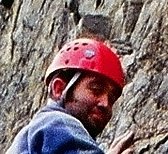Reflections on Ethiopia...
This is not an African journal entry. I stopped making those when I got back to Addis. There really wasn't much to report, I was just hotel surfing and waiting for the Mount Kenya trek. At the time I was just tired of travelling and didn't do much reflection. I felt I had to rest for what was going to be an exhausting climb in Kenya.
Now, since I re-started these entries and, in a sense, relived my whole trip through them I was able to reflect on how much I learned and gained from Ethiopia. So, I was up at 5:30 this morning, I've had breakfast, showered, etc., and I'm waiting for a phone call from a prospective employer hopefully granting me an interview (I'll call him at nine if he hasn't reached me by then). Perfect time to sit down and jot some thoughts on the country and my experiences there.
- Although I had originally planned to travel the country in a tour, going it alone has its advantages and disadvantages. At no point was I sheltered from the culture I had come to see. This was great. I travelled with locals, their chickens and cats as well; when I wanted to see a site I literally found someone lingering around the hotel, he'd find someone else and we'd negotiate a price just as the locals do; walking around cities and towns where I was the only white would bring out locals (in one case) who were more than happy to help me out with my problems, or just wanted to follow me around and ask questions. Concerning the latter, this eventaully became annoying: there are times, especially as a photographer, when you don't want to be approached and hassled. You want to slip into the background and effectively disappear to get your photos. Almost everywhere in Ethiopia this just was not possible. This was quite bad since it led to me taking rest days to avoid the scammers on the street and staying cooped up in a hotel instead of hitting the streets with my camera. Still, the positives of independent travel in my case outweigh the negatives.
- The sites of interest themselves were living, breathing entities (except the castles of Gonder). The monasteries of Lake Tana were just that - they housed cloisters of Monks who tended to the site. The Stone churches of Lalibella were active and provided service for the locals every sunday. When you go to these places you don't have the feeling that you're visiting a tourist site (it helps that there's hardly any other tourists), you have the feeling that you're visiting an active monastery or church of immense importance to the spirit of Ethiopia. It leaves you humbled and fascinated.
- Ethiopia remains the secret gem of East Africa. With the Simien mountains, and sites like Lalibella you'd think the place would be crawling with tourists. It really isn't and in a way I'm glad. Of course it would be better for Ethiopians if more tourists came (I was asked by many of the local guides I hired to encourage more tourists to come), but it's fantastic to explore the country totally solo. You get the feeling that you're bearing witness to wonders that few in the Western world (their heads filled with images of starving children when they think of Ethiopia) will ever be priviledged enough to see.
- Ethiopia is making steps towards democracy but is still ruled with an iron, or aluminum fist. There's no military or police roaming the streets. But there's been problems with election fraud. I learned from people I talked with (mainly about the impending war with Somalia's Union of Islamic Courts) that people who talked badly about government policy ended up in prison. It's not nearly as bad as the Mengistu regime with its massacres, but today's Ethiopia has a long way to go in doling out democratic freedoms to it populace.
Looking back, I feel very honored and blessed to have been able to see this country in the manner in which I did. Independent travelling made for some truly local cultural experiences and enabled me to do things I wouldn't have had the option with a tour (such as the climb of Ras Dejen). Would I go back? Probably not, but that's just mainly because there are so many other places I want to go in this world.

